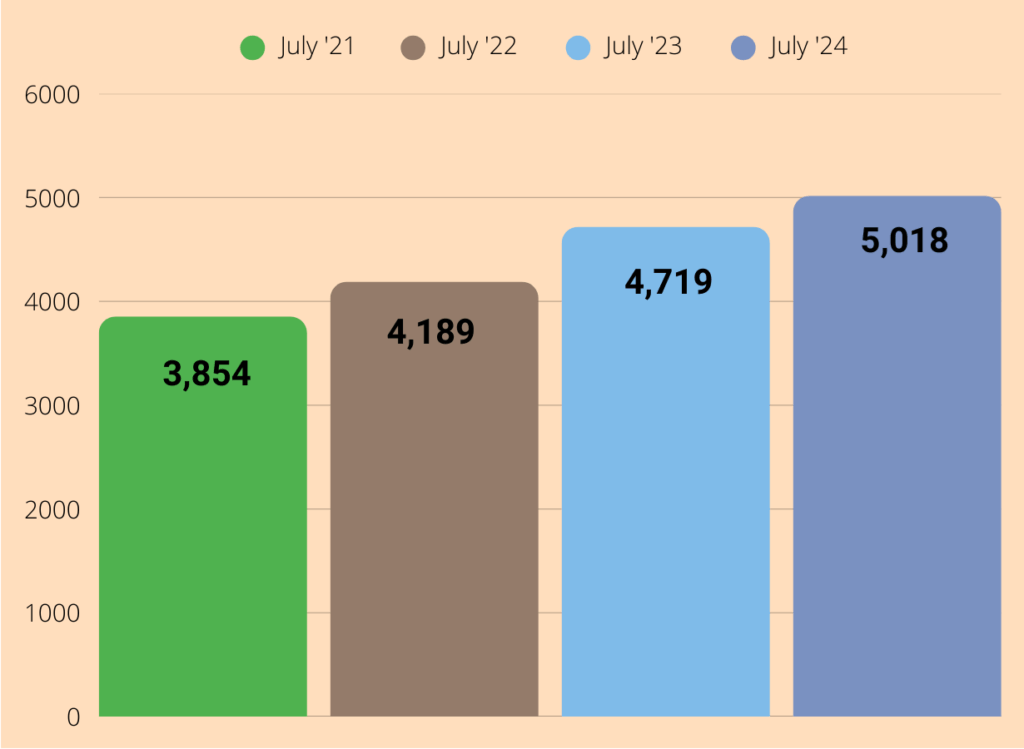
Overcrowded Conditions
Our prisons today are overcrowded, full of drugs and increasingly violent places, both for prisoners and staff. In July 2021, there were 3,854 people in prison; in July 2022, there were 4,189; in July 2023, there were 4,719; in July 2024, there were 5,018, of whom only 1,857 prisoners could be accommodated in single cells.

Yesterday, there were 5,362 people in our prisons. The government response is a promise to provide 1,500 more prison places. But the history of expanding prison places is that they too quickly fill up and yet more prison places are promised.
Wheatfield prison was opened in 1989 with spaces for 320 prisoners. It quickly filled up and bunk beds were placed in many cells to increase capacity. It too quickly filled up and a new unit was built with about an extra 150 spaces. Bunk beds were placed in many cells here also. Today, it has 689 prisoners.
Castlerea Prison was opened in 1998 with a bed capacity of 340. Today, it has over 430.
Cloverhill Prison was built in 1999 with a bed capacity of 431. It too quickly filled up and today some prisoners have to sleep on mattresses on the floor in the cells beside the toilet.
The Midlands Prison was built in 2000 with a bed capacity of 870. Today, it has 1,024 prisoners.
Overall, Irish prisons today are at 115% capacity.
No Supports in Prison
With a little vision, perhaps there is a better way of addressing prison overcrowding. Over 70% of those who are committed to prison have an addiction, most of whom have been sentenced for crimes related to their addiction, such as robbery, shop-lifting, or selling drugs to feed their habit, or storing or transporting drugs to pay off a drug debt. While in prison, they receive little or no help with their addiction. All our prisons are doing is “warehousing” drug users and releasing them again, thereby ensuring that many will return to using drugs and back into prison.
Filling prisons with drug users also increases the level of violence and puts prisoners and staff at risk. In July 2024, the number of prisoners who were on protection for their own safety was 870, (17% of the prison population) of whom 738 were there at their own request. Being on protection means spending up to 23 hours a day in their cell with nothing to do except watch television. To reduce the numbers going into prison, perhaps it would be better to provide 1,500 extra drug treatment places within the community. Many of those who end up in prison have committed crimes to feed their drug habit while waiting for a place in the limited drug treatment places available at present.
Alternative Approach
In Sweden, there are 800 places in custodial addiction treatment centres within the prison system. It is described as “correctional care” rather than “storage”. Here, in Ireland, in the 1977 Misuse of Drugs Act, Section 28 (and there were almost no drugs in Ireland then) some far-sighted civil servant included a section which would allow a judge to send a person to a custodial addiction treatment centre in lieu of a prison sentence. A person charged with a less serious offence related to their addiction would be offered the choice of a prison sentence or a ten-week drug treatment programme. If successfully completed, they could then be released under the supervision of a probation officer, with the support of a community drug service, to ensure their continued recovery. If this breaks down, they would be returned to court to be sentenced.
However, almost fifty years later, no such custodial addiction treatment centre exists, apart from a few beds in the medical centre in Mountjoy prison. Wheatfield prison would be the ideal place for such a centre. The older building (1989) consists of twenty, independent, self-contained units with sixteen single cells in each. The ten units on the ground floor would be ideal for 160 custodial detox places and the ten units on the upper floor would be ideal for 160 custodial drug-free treatment places.
In my experience with drug users in prison, many would be delighted to have had such an option, instead of meaninglessly “doing time.”

